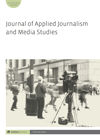
Full text loading...


Gender-based violence (GBV) is a grave violation of human dignity that significantly impacts millions of individuals worldwide, with Sub-Saharan Africa facing severe challenges. This article examined the effectiveness of Sengerema community radio in addressing GBV within Tanzania. The research specifically investigates the level of community engagement in radio-based dialogues regarding GBV. Employing a mixed-methods approach and descriptive research design, data was gathered from a sample of 204 community members surveyed across five wards of the Sengerema District. Additionally, interviews and focus group discussions were conducted with radio programme producers and editors. The findings reveal that only 40 per cent of community members actively participate in radio programmes focused on GBV, with men displaying higher levels of engagement compared to women. While the radio has contributed to positive shifts in attitudes towards GBV, its capacity to expose and effectively address this issue through programming remains limited. The study identifies several challenges faced by the radio station in its endeavours to tackle GBV, including financial constraints, inadequate support from politicians and local government leaders, deeply entrenched cultural practices, and unfavourable programme scheduling. To enhance the radio’s effectiveness in addressing GBV, the study recommends increasing the number of programmes dedicated to this issue, involving local government leaders in broadcasting plans and scheduling programmes at times when they are accessible to a larger portion of the community.

Article metrics loading...

Full text loading...
References


Data & Media loading...
Publication Date:
https://doi.org/10.1386/ajms_00128_1 Published content will be available immediately after check-out or when it is released in case of a pre-order. Please make sure to be logged in to see all available purchase options.